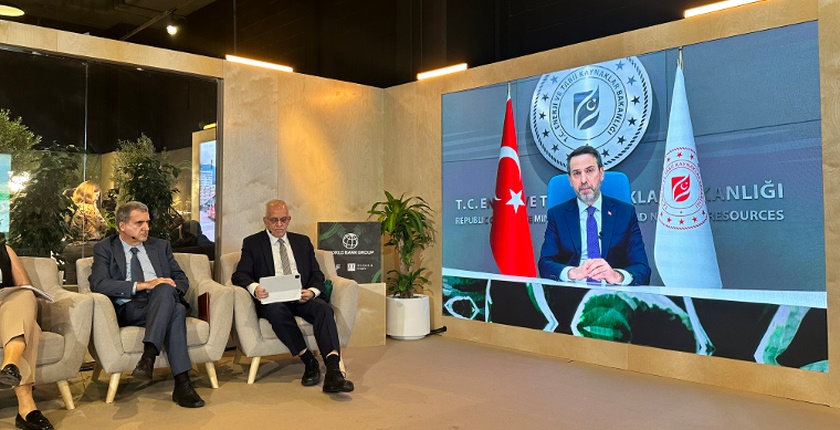
Photo: Ministry of Energy and Natural Resources
Turkey has pledged to double renewable energy generation capacity by adding 60 GW of solar and wind by 2035 and announced a plan to invest USD 10 billion in the grid. According to the World Bank, the country’s entire initiative is estimated at USD 75 billion to USD 100 billion.
Utilizing renewable resources, developing transmission infrastructure for more renewables, and increasing energy efficiency in all sectors are Turkey’s main goals, Minister of Energy and Natural Resources Alparslan Bayraktar said in a video message sent to a panel with a special focus on Turkey, hosted by the World Bank at the COP28 summit in Dubai.
Bayraktar stressed the country’s total installed capacity has exceeded 106 GW and that the share of renewables reached 50%.
Turkey’s projections show its total installed capacity will increase to 190 GW by 2035, including 60 GW of renewable electricity plants, he added in the statement for the panel Transforming Turkey With Sun, Wind, And Smart Grids: New Targets To Net Zero.
Bayraktar: Turkey is continuing negotiations with the World Bank
According to Bayraktar, energy transition means constantly improving the grid.
For this reason, the government is developing a green grid with strong interconnectivity that can handle the expected increase in renewable capacity. The investments are projected at USD 10 billion by 2030, he announced.
Bayraktar recalled that Turkey targets reducing emissions by 100 million tons cumulatively in its Energy Efficiency Action Plan for 2024-2030.
He stressed that the government is continuing negotiations with the World Bank. The international lender, the ministry and the private sector have committed to providing financial and technical support for the country’s plans, Bayraktar added.
Lopez: Preparation started for a new operation that could reach USD 750 million
The World Bank said that the decision to double renewable energy capacity by adding 60 GW of solar and wind by 2035 is one of the most ambitious programs the world has seen among energy transition countries.
Humberto Lopez, World Bank country director, said the government’s program includes the modernization and digitalization of the transmission grid – “no transition without transmission” – and that it would enable the integration of intermittent capacity, as well as the modernization of the distribution network.
The whole initiative will cost USD 75 billion to USD 100 billion and require close collaboration among the public sector, private sector, and multilateral development banks including the World Bank, Lopez explained.
According to Lopez, USD 60 billion to USD 75 billion is planned for electricity production, USD 10 billion for transmission, and USD 8 billion to USD 10 billion for distribution.
“As the World Bank, our area of focus will be the transmission system. We have already started preparations for a new operation that could reach USD 750 million,” Lopez said, Daily Sabah reported.


















Be the first one to comment on this article.